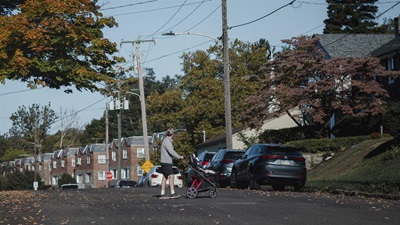More U.S. Residents Are Working Past Retirement Age
The share of households ages 65 and up increased by 33% in a decade—and, nationwide, more older residents are living in poverty

A growing share of residents ages 65 and older are continuing to work beyond the traditional retirement age as the effects of poverty and limited income place a strain on older adults nationwide—and these issues are especially heightened in cities.
The population of older residents in the U.S. grew by 32.8% from 2013 to 2023, compared with the overall national growth rate of just 5.9%. The Pew Charitable Trusts examined 18 major cities and discovered several challenges that these demographic trends—which are projected to continue—present as the United States’ aging population faces mounting financial pressures.
This analysis used 2023 U.S. Census Bureau data to observe trends among this age cohort in Baltimore; Chicago; Dallas; Detroit; El Paso, Texas; Houston; Jacksonville, Florida; Kansas City, Missouri; Los Angeles; Memphis, Tennessee; New York; Philadelphia; Phoenix; Portland, Oregon; San Antonio; San Diego; San Jose, California; and Tucson, Arizona.
In all 18 of these cities, an average of 16.5% of older residents lived below the poverty level, and an additional 10.1% had incomes ranging from 100% to 149% of the poverty level, referred to in a June 2025 Pew report as “low income”—a substantially higher figure than the national rate of 11.3% of older Americans living in poverty and an additional 8.2% with low incomes.
Older residents’ sources of income
Among older households, the three most common sources of income were earnings, Social Security benefits, and retirement funds—including IRAs, 401(k)s, and pensions.
Older households rely heavily on Social Security benefits, which pay a percentage of workers’ preretirement income. In the U.S., 87% of older households received Social Security as part of their annual income in 2023, compared with 83% among the cities analyzed.
The average income from Social Security was somewhat higher nationwide than in comparison cities—$25,500, compared with $22,800—meaning that, in these cities, many households relying solely on Social Security were close to the low-income threshold.
Older households also typically received some form of retirement income, including personal or employer-provided retirement accounts such as IRAs, Roth IRAs, 401(k)s, and 403(b)s, as well as pensions from their places of employment. Nationally, more than half of older households (58%) received such income in 2023. Among the cities studied, the figure was 49%.
Nationwide, the average retirement income was $34,100—a little higher than the $33,100 average among comparison cities.
The third most common source of income for older households was part-time or full-time employment. Nationally, 39% of older households received income from work, a lower percentage than from Social Security or retirement funds. In comparison cities, 42% of older households drew income from work.
Employment income for older residents in comparison cities was higher than the national average—$78,100 in cities, compared with $74,800 nationwide.
Across the 18 cities, the median income for older households (defined as those with a head of household age 65 or older) was $51,000, lower than the national median of $56,000 for the same demographic. Of the comparison cities, San Jose had the largest gap in median income between older households and all others ($78,000 and $136,200), and Detroit had the smallest gap ($35,800 and $38,100, respectively).
More residents are working beyond retirement age
While many older adults retire around age 65, a sizable and growing share of that population continues to work either out of necessity or according to personal preference. Pew’s analysis of census data showed that the labor force participation rate for older residents increased by 2 percentage points nationwide from 2013 to 2023 (from 17.2% to 19.2%), while comparison cities saw a 3.4 percentage-point increase (from 17.3% to 20.7%). Every comparison city registered increases, except for Houston, which remained virtually unchanged over the decade. And the number of comparison cities with labor force participation rates above the national average increased from eight to 15 during this time.
Populations of residents 65 and older are growing in U.S. cities. At the same time, these expanding cohorts are facing significant challenges that affect their lives and their communities. Many have incomes below the national average for people in their age group and experience poverty at a rate higher than the national average. And more older residents are working past age 65 to help manage their financial challenges.
Jun Ho Phue is a senior associate and Jennifer Clendening is a manager with The Pew Charitable Trusts’ Philadelphia research and policy initiative.














